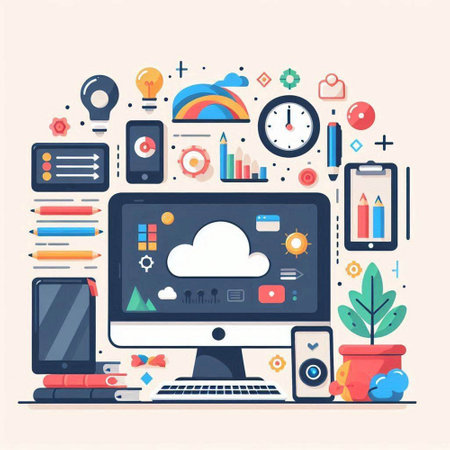Introduction: The Importance of Well-Rounded Employee Development
In today’s fast-paced business environment, top American companies know that success isn’t just about hiring employees with the right technical skills. While technical expertise is essential for job performance, leading organizations are also focusing on developing their employees’ soft skills—like communication, teamwork, adaptability, and problem-solving. This balanced approach helps companies stay competitive and adapt to constant change.
Why Technical and Soft Skills Matter Equally
Technical skills ensure employees can perform their core job functions efficiently. For example, a software engineer needs programming knowledge, while a marketing professional must understand digital tools. However, soft skills help people work better together, lead teams, resolve conflicts, and build lasting relationships with clients and colleagues. Companies have found that even the most technically skilled employee may struggle without strong interpersonal abilities.
The Business Impacts of Balanced Employee Development
Organizations that invest in both types of skills see benefits like increased innovation, higher employee engagement, and improved customer satisfaction. Employees who communicate well and collaborate effectively are more likely to generate creative ideas and solve problems quickly. This focus on well-rounded development also leads to lower turnover rates because workers feel valued and supported in their growth.
Key Benefits at a Glance
| Benefit | Impact on Business |
|---|---|
| Higher Productivity | Employees use both technical and people skills to work smarter and faster. |
| Better Teamwork | Smoother collaboration leads to stronger project outcomes. |
| Greater Innovation | Diverse perspectives spark new ideas and creative solutions. |
| Improved Customer Experience | Employees with empathy and communication skills deliver better service. |
| Lower Turnover | People stay longer when they’re learning and growing in multiple areas. |
This is why leading American companies dedicate resources to training programs that go beyond just technical know-how. They understand that developing well-rounded employees is key to long-term success in an ever-evolving marketplace.
2. Blended Learning Programs in Major Tech Firms
What Are Blended Learning Programs?
Blended learning programs combine traditional classroom training with digital resources, hands-on projects, and peer collaboration. In leading American tech companies, these programs are designed to help employees strengthen both technical skills (like coding or data analysis) and soft skills (such as communication or teamwork).
How Top Tech Companies Structure Their Programs
Let’s look at how some of the biggest names in technology—like Google, Microsoft, and IBM—create blended learning environments for their teams.
| Company | Technical Skill Development | Soft Skill Development | Blended Learning Methods |
|---|---|---|---|
| Online coding labs, AI workshops | Peer coaching, leadership bootcamps | Virtual classrooms + on-site hackathons + mentorship circles | |
| Microsoft | Azure certification, cloud computing courses | Diversity & inclusion seminars, public speaking clubs | Interactive e-learning + instructor-led sessions + group projects |
| IBM | Blockchain tutorials, data science labs | Conflict resolution training, emotional intelligence modules | Online platforms + live webinars + case study discussions |
The Power of Structured Growth Opportunities
Employees at these companies have access to carefully structured paths that mix self-paced online content with real-world applications. For example, a software engineer might take an online course in Python programming and then join a team challenge where they build an actual tool for internal use. At the same time, they participate in workshops focused on giving constructive feedback or navigating team dynamics.
Real-World Benefits for Employees and Companies
This approach helps employees not only master the latest technologies but also develop the interpersonal skills needed to collaborate and lead effectively. As a result, companies see higher productivity and stronger teams, while individuals feel more confident tackling complex projects.

3. Mentorship and Peer Learning at Fortune 500 Companies
Many top American companies, especially those in the Fortune 500, have discovered that mentorship and peer learning are powerful tools for developing both technical skills and soft skills like communication and leadership. These initiatives not only help employees grow faster but also create a more collaborative and innovative workplace culture.
Mentorship Programs: Building Skills Through Relationships
Mentorship programs match less experienced employees with seasoned professionals who can offer guidance, advice, and support. At companies like Google, IBM, and General Electric, these relationships are more than just career coaching—they’re opportunities for hands-on learning. Mentees often shadow their mentors, participate in real projects, and get direct feedback on both technical tasks and interpersonal interactions.
Key Benefits of Mentorship
| Benefit | Description |
|---|---|
| Technical Proficiency | Mentees learn new technologies or processes directly from experienced professionals. |
| Communication Skills | Regular check-ins encourage open dialogue and constructive feedback. |
| Leadership Development | Mentees observe and practice leadership behaviors in real scenarios. |
| Networking Opportunities | Mentors introduce mentees to wider professional circles. |
Peer-to-Peer Learning Networks: Growing Together
Peer learning networks are another popular method at top U.S. companies like Microsoft and Salesforce. In these networks, employees form groups based on shared interests or roles—such as coding clubs, design workshops, or project management circles. Here’s how they work:
- Knowledge Sharing: Employees present on topics they’re passionate about or skilled in, making it easy for others to learn in a relaxed setting.
- Collaborative Problem Solving: Teams tackle real business challenges together, blending different perspectives.
- Feedback Loops: Regular sessions provide space for giving and receiving feedback, which builds communication confidence.
- Diversity of Ideas: Employees from various backgrounds contribute unique insights that drive innovation.
Comparison: Mentorship vs. Peer Learning Networks
| Mentorship Programs | Peer Learning Networks | |
|---|---|---|
| Main Focus | One-on-one development (Guidance & feedback) |
Group-based development (Collaboration & sharing) |
| Skill Types Developed | Technical & soft skills (Personalized) |
Technical & soft skills (Collective) |
| Cultural Impact | Cultivates trust between generations/levels | Encourages inclusivity & teamwork across the company |
| Sustainability | Relies on mentor availability & commitment | Sustained by group engagement & shared interests |
The American Workplace Mindset: Continuous Improvement Together
The integration of mentorship and peer-to-peer learning reflects a core value in U.S. corporate culture—continuous improvement through collaboration. Employees aren’t expected to “know it all” from day one; instead, they’re encouraged to learn from each other at every stage of their career. By fostering these connections, American companies ensure their teams stay adaptable and ready for future challenges.
4. Soft Skills through Corporate Culture and Employee Resource Groups
Building Soft Skills Beyond the Classroom
Top American companies understand that technical expertise alone isnt enough for long-term success. To help employees grow, organizations like Google, Microsoft, and Johnson & Johnson invest in workplace culture and support networks that boost soft skills such as collaboration, adaptability, and emotional intelligence.
The Role of Workplace Culture
A positive and inclusive workplace culture encourages employees to share ideas, take initiative, and work together across departments. At Salesforce, for example, “Ohana Culture” means treating colleagues like family, which creates an environment where people feel safe to communicate openly and solve problems as a team.
How Culture Supports Soft Skills
| Company | Cultural Approach | Soft Skills Developed |
|---|---|---|
| Psychological Safety | Collaboration, Communication | |
| Salesforce | Ohana Family Values | Empathy, Teamwork |
| Zappos | Fun & Weirdness at Work | Adaptability, Creativity |
Diversity Initiatives Drive Adaptability & Emotional Intelligence
Diversity is more than a buzzword in the U.S.—it’s a business priority. Companies actively recruit talent from different backgrounds and encourage open dialogue about perspectives and experiences. For instance, Procter & Gamble’s diversity programs include training on cultural competence and unconscious bias, helping employees understand each other better and adapt to change.
Benefits of Diversity Initiatives
- Improved Collaboration: Teams learn to value different viewpoints.
- Greater Adaptability: Employees are prepared to respond to new challenges.
- Higher Emotional Intelligence: Awareness of diverse needs fosters empathy.
The Power of Employee Resource Groups (ERGs)
Employee Resource Groups (ERGs) are voluntary communities within companies based on shared identities or interests—like women in tech or veterans. ERGs at companies like IBM or Facebook create safe spaces for mentorship, skill-sharing, and networking. This helps members build confidence, communication skills, and cross-cultural understanding.
Examples of ERGs and Their Impact
| Company | ERG Name | Main Focus | Soft Skills Enhanced |
|---|---|---|---|
| IBM | Women@IBM Network | Mentorship & Leadership Development | Leadership, Communication |
| Dell Technologies | Pride ERG (LGBTQ+) | Diversity & Inclusion Advocacy | Cultural Awareness, Empathy |
| Coca-Cola | African American Business Resource Group (AABRG) | Cultural Events & Professional Growth | Networking, Emotional Intelligence |
Through corporate culture initiatives and employee resource groups, top American companies provide real-world opportunities for staff to practice—and master—the soft skills needed for today’s dynamic workplaces.
5. Measuring Development: Success Metrics and Employee Feedback Systems
Top American companies know that developing both technical and soft skills in employees isn’t just about offering training programs—its about making sure those programs actually work. To do this, they use a variety of methods to measure employee growth and the impact on their business. Here’s how some of the best in the U.S. approach measurement:
Engagement Surveys
Companies like Google and Microsoft regularly send out engagement surveys to gauge how employees feel about their development opportunities. These surveys ask questions about job satisfaction, access to learning resources, and whether employees feel supported in growing their skills. The results help HR teams spot trends and identify areas for improvement.
Sample Engagement Survey Questions
| Question | Purpose |
|---|---|
| Do you feel you have enough opportunities for skill development? | Measures perceived access to growth resources |
| How supported do you feel by your manager when seeking new learning experiences? | Evaluates managerial support for development |
| Have you used any new skills in your role recently? | Assesses real-world application of learned skills |
Performance Metrics
Leading companies link employee development to performance metrics. For example, Amazon tracks how upskilling affects productivity, quality of work, and innovation. They look at both individual and team performance before and after training sessions. By comparing data over time, they can see what kinds of training drive real improvements.
Commonly Tracked Performance Metrics
| Metric | Description | Example Use Case |
|---|---|---|
| Productivity Rate | Output per employee over a given period | Comparing project completion speed before and after training |
| Error Reduction | Decrease in mistakes or defects after upskilling sessions | Tracking coding errors pre- and post-technical workshops |
| Promotion Rate | The percentage of employees moving into higher roles due to skill acquisition | Measuring leadership program effectiveness at Walmart |
Continuous Feedback Mechanisms
American companies often use ongoing feedback systems instead of waiting for annual reviews. This includes regular check-ins between managers and team members, peer feedback platforms like 15Five or Lattice, and digital “kudos” boards where colleagues can recognize each others progress in real time. Continuous feedback helps employees adjust quickly, stay motivated, and keep improving both hard and soft skills.
Main Types of Continuous Feedback Systems
| System Type | Description/Example Tool | Benefit to Employees & Company |
|---|---|---|
| Manager Check-ins | Weekly 1-on-1 meetings with direct supervisor (e.g., using Lattice) | Keeps goals clear and progress tracked closely |
| Peer Recognition Tools | Kudos boards or platforms (e.g., Bonusly) | Makes achievement visible across teams; boosts morale |
| Pulse Surveys | Short, frequent surveys on specific topics (e.g., Officevibe) | Catches issues early; tracks sentiment over time |
The Impact: Data-Driven Decisions for Growth
This measurement-first approach lets American companies see exactly what’s working in their development programs—and what needs adjusting. By listening to employee feedback, tracking key metrics, and offering continuous support, organizations create a culture where both technical know-how and people skills can thrive.

